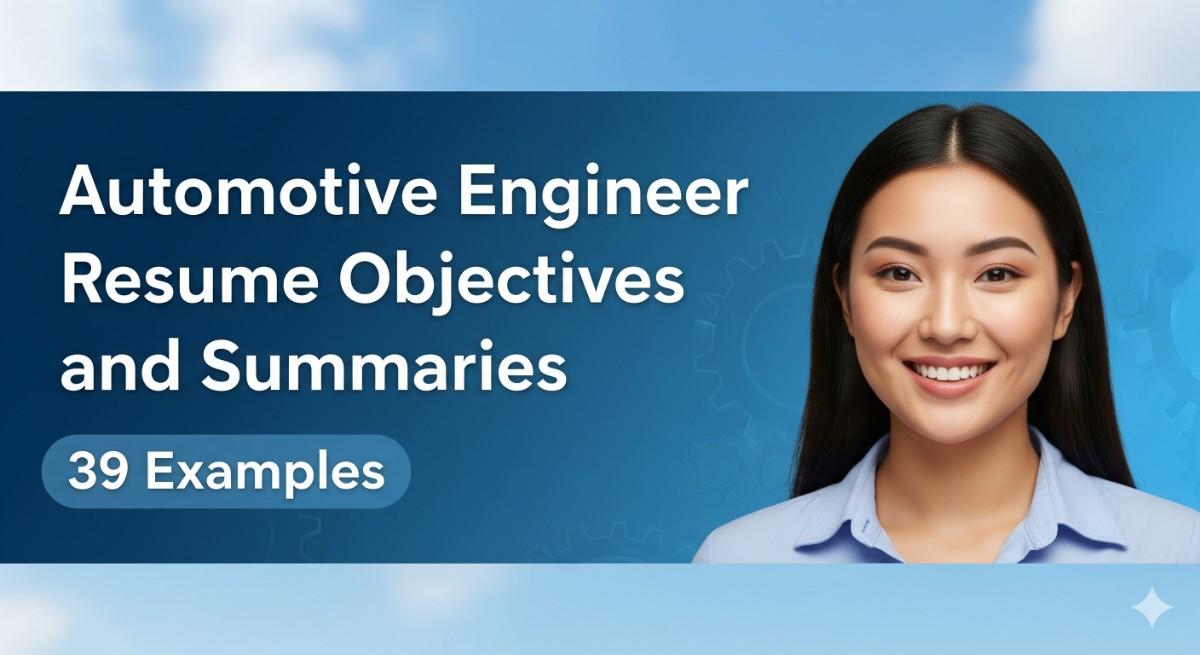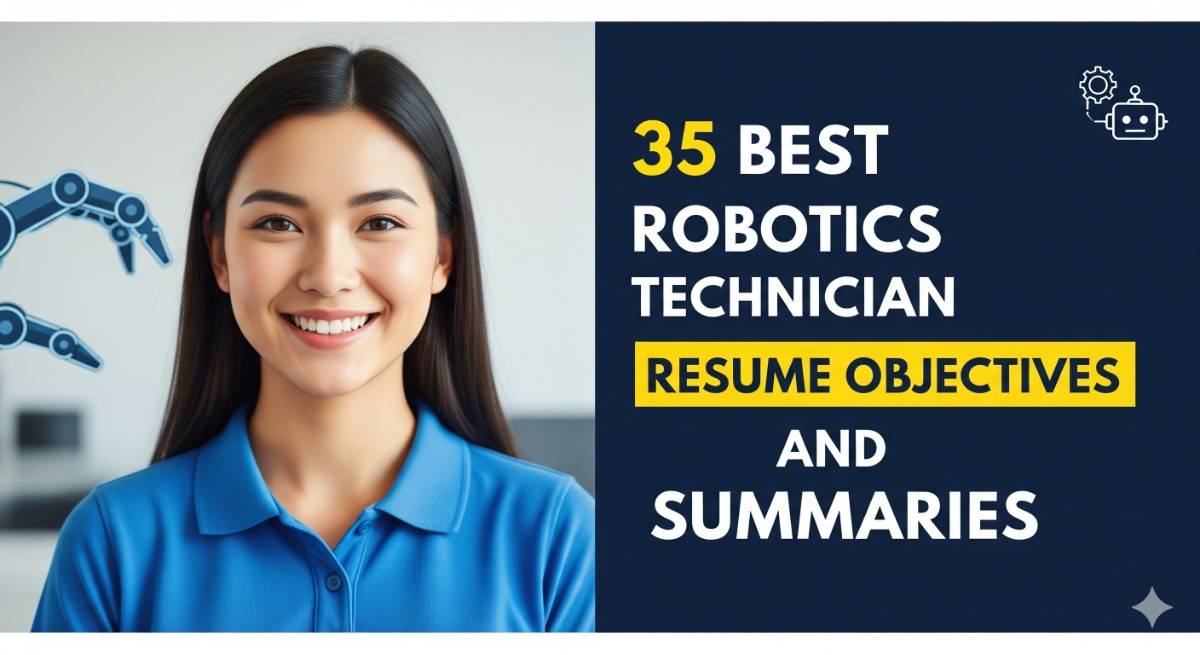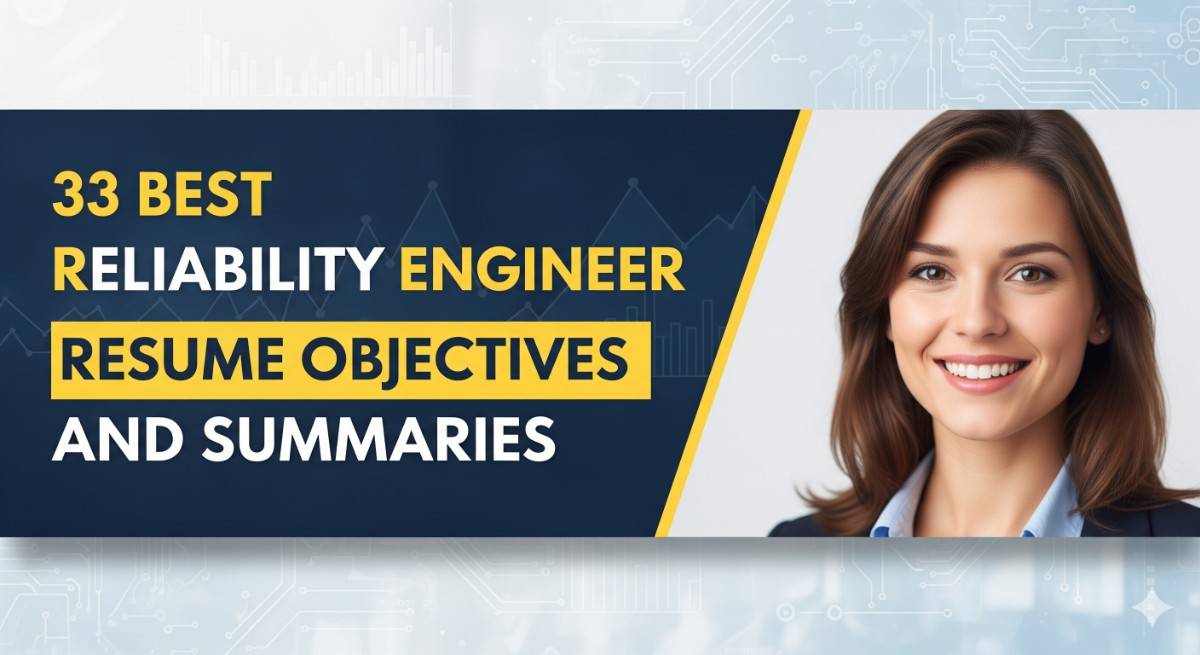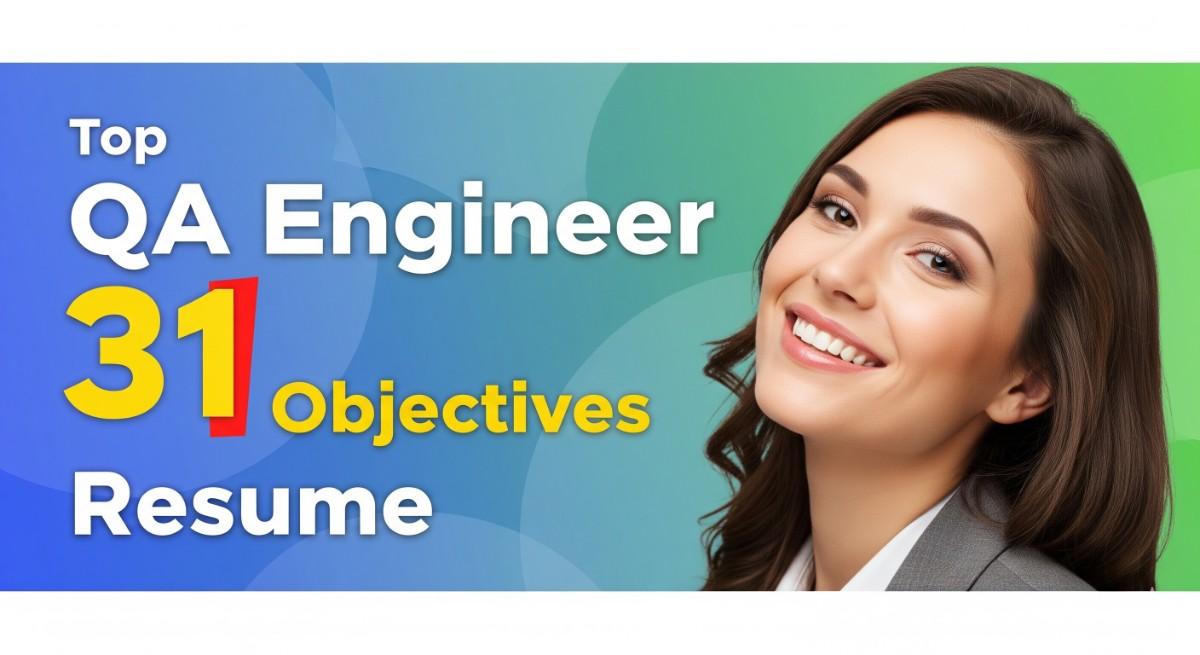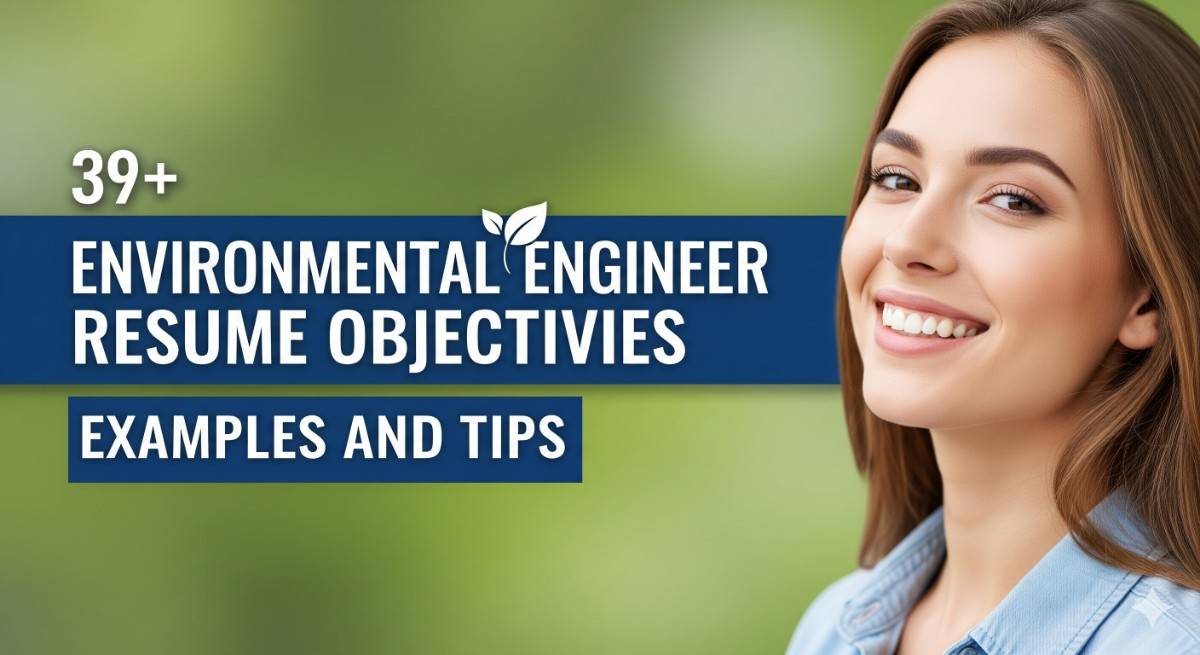
Cybersecurity Engineer Resume Objectives and Summaries: 37 Examples for 2025
In the highly competitive field of cybersecurity, a well-crafted resume objective or summary can be the deciding factor in capturing a hiring manager’s attention. These opening statements serve as a powerful introduction to a candidate’s skills, experiences, and career aspirations, allowing them to succinctly showcase their value in a landscape where technical proficiency and strategic thinking are paramount. A compelling objective or summary not only highlights relevant certifications and hands-on expertise in threat analysis, vulnerability assessment, and incident response but also conveys enthusiasm for safeguarding digital environments. In today’s job market, where first impressions are crucial, well-articulated objectives and summaries can significantly elevate a candidate’s profile, making them stand out as the ideal choice for cybersecurity roles.
- Cybersecurity Engineer Resume Objectives
- Cybersecurity Engineer Resume Summaries
- How to Write Compelling Cybersecurity Engineer Resume Objectives and Summaries
- Key Takeaways for Cybersecurity Engineer Resume Objectives and Summaries
- Frequently Asked Questions
- What is the ideal length for a Cybersecurity Engineer resume objective or summary?
- How should I customize my Cybersecurity Engineer resume objective or summary for different job applications?
- What keywords should I include in my Cybersecurity Engineer resume objective or summary?
- How can I ensure my Cybersecurity Engineer resume objectives and summaries are effective?
Explore professional resume examples to understand what makes an effective opening statement.
Cybersecurity Engineer Resume Objectives
Choose from these Cybersecurity Engineer resume objectives and customize them for your specific situation:
Dedicated and detail-oriented recent graduate with a Bachelor’s degree in Cybersecurity, seeking an entry-level Cybersecurity Engineer position. Eager to leverage knowledge of network security protocols and vulnerability assessment tools to protect organizational assets and contribute to a secure digital environment.
Motivated cybersecurity professional with 3 years of experience in threat analysis and incident response. Aiming to secure a mid-level Cybersecurity Engineer role where I can utilize my expertise in intrusion detection systems and risk management to enhance organizational security measures and improve response protocols.
Detail-driven Cybersecurity Engineer with over 5 years of experience in designing and implementing robust security infrastructures. Seeking a challenging position where I can apply my skills in penetration testing and security audits to proactively defend against evolving cyber threats and bolster system integrity.
Emerging cybersecurity specialist transitioning from a background in IT support. Passionate about applying technical skills in network security and data protection at an innovative company, with the goal of advancing quickly within the cybersecurity field while contributing to safeguarding digital assets.
Build your resume in just 5 minutes with AI.

Results-oriented Cybersecurity Engineer with a proven track record of reducing security incidents by 40% through effective threat modeling and vulnerability assessments. Looking to join a dynamic team where I can utilize my strong analytical skills and extensive knowledge of industry best practices to enhance security frameworks.
Proactive cybersecurity professional with 10+ years of experience in risk assessment and compliance management, seeking to leverage my background in regulatory frameworks at a leading tech firm. Committed to implementing comprehensive security strategies that align with business objectives and protect sensitive data.
Ambitious entry-level candidate with hands-on experience in ethical hacking and security analytics through internships. Eager to bring my passion for cybersecurity to a fast-paced environment and grow my skills while contributing to innovative security solutions and fostering a culture of security awareness.
Cybersecurity Engineer with a focus on cloud security and data encryption, possessing over 4 years of experience in securing enterprise applications. Aspiring to join a forward-thinking organization where I can apply my expertise in cloud infrastructures to enhance security policies and ensure compliance with industry standards.
Self-motivated individual with a unique blend of cybersecurity knowledge and project management experience, looking to transition into a Cybersecurity Engineer role. Aiming to leverage strong communication skills and a collaborative approach to improve security practices and foster a proactive security culture within the organization.
Adaptable professional with a strong foundation in programming and cyber defense gained from a rigorous bootcamp. Seeking an entry-level Cybersecurity Engineer position to apply my coding skills and analytical mindset in safeguarding systems and contributing to innovative security solutions.
Experienced Cybersecurity Engineer with a focus on threat intelligence and incident response, having successfully led multiple security projects that improved vulnerability detection rates. Looking to leverage my strategic approach and leadership skills in a challenging role that allows me to mentor junior engineers while enhancing overall security posture.
Cybersecurity enthusiast and recent graduate with hands-on experience in security operations and vulnerability management through academic projects. Eager to kickstart my career as a Cybersecurity Engineer, driven to protect sensitive data and contribute to developing cutting-edge security strategies in a collaborative environment.
Detail-oriented professional returning to the workforce after a career gap, with a background in information technology and cybersecurity certifications. Excited to apply my renewed passion for cybersecurity in an Engineer role where I can contribute to mitigating risks and protecting digital infrastructures.
Dynamic cybersecurity expert with over 7 years of experience in designing security architectures and conducting risk assessments. Seeking a senior Cybersecurity Engineer position where I can utilize my strong leadership skills and technical knowledge to drive security initiatives and mentor aspiring cybersecurity professionals.
Tech-savvy individual transitioning from a software development role into cybersecurity, eager to apply coding and analytical skills to enhance system security. Looking for an entry-level position as a Cybersecurity Engineer to grow my expertise in secure coding practices and threat detection.
Innovative Cybersecurity Engineer with extensive experience in compliance auditing and security frameworks, having successfully led initiatives that improved policy adherence by 30%. Seeking to join a mission-driven organization where I can employ my skills in regulatory compliance and risk management to bolster security measures.
Cybersecurity specialist with a focus on endpoint security solutions and a proven ability to identify and mitigate threats. Seeking to contribute my analytical skills and technical expertise as a mid-level Cybersecurity Engineer in a growing organization focused on proactive security strategies and advanced threat protection.
Cybersecurity Engineer Resume Summaries
Select from these professional Cybersecurity Engineer resume summaries and adapt them to highlight your unique qualifications:
Dynamic Cybersecurity Engineer with over 7 years of experience in securing enterprise-level networks against emerging threats. Proficient in implementing advanced security protocols and conducting vulnerability assessments, resulting in a 40% reduction in security incidents over three years. Skilled in penetration testing and incident response, with a strong understanding of regulatory compliance standards, including ISO 27001 and GDPR. Eager to leverage expertise in threat hunting and risk management to enhance organizational security posture.
Results-driven Cybersecurity Engineer with 5 years of experience in developing and deploying security solutions within the financial services industry. Successfully led a team in the implementation of a multi-layered security architecture that decreased potential breaches by 30%, ensuring compliance with PCI DSS standards. Possesses hands-on knowledge of SIEM tools and intrusion detection systems, combined with exceptional analytical skills to identify and mitigate threats. Committed to continuous learning and advancing cybersecurity measures to protect sensitive data.
Seasoned Cybersecurity Engineer with over 10 years of experience specializing in cloud security and data protection. Proven track record of designing security frameworks for AWS and Azure, achieving a 50% increase in incident detection rates. Strong background in creating and executing incident response plans, along with expertise in encryption technologies and network security protocols. Passionate about staying ahead of industry trends to safeguard organizational assets against evolving cyber threats.
Innovative Cybersecurity Engineer with 3 years of experience in malware analysis and threat intelligence. Recognized for developing automated scripts that improved the threat detection process by 25%, enabling rapid response to potential vulnerabilities. Adept at collaborating with cross-functional teams to ensure security measures are integrated into all stages of software development. Eager to contribute cyber expertise and a proactive attitude to enhance security operations in a forward-thinking organization.
Dedicated Cybersecurity Engineer with a focus on risk assessment and compliance, bringing 8 years of experience in healthcare IT security. Successfully managed security audits that achieved compliance with HIPAA regulations, resulting in zero incidents during internal evaluations. Proficient in implementing security awareness programs that reduced potential human errors by 20%. Looking to leverage extensive knowledge in regulatory compliance and risk management to support a mission-driven organization.
Accomplished Cybersecurity Engineer with over 6 years of experience in network security and vulnerability management. Played a key role in the development of an enterprise-wide security policy that reduced vulnerabilities by 45% in just one year. Expert in utilizing tools such as Nessus and Metasploit to perform thorough security assessments. Enthusiastic about translating technical complexity into actionable strategies to bolster security measures for diverse sectors.
Versatile Cybersecurity Engineer with 4 years of experience in ethical hacking and penetration testing. Developed a comprehensive testing strategy that exposed critical vulnerabilities in clients’ systems, leading to a 35% improvement in overall system security. Strong knowledge of various programming languages, including Python and Java, to create custom security solutions. Excited to bring technical acumen and innovative problem-solving to a high-impact cybersecurity team.
Experienced Cybersecurity Engineer with a strong background in securing IoT devices and critical infrastructure, backed by 7 years of hands-on experience. Successfully led a project that implemented advanced security measures that reduced unauthorized access attempts by 60%. Skilled in developing threat models and conducting risk assessments to safeguard digital assets. Motivated to drive cybersecurity initiatives in an organization that values innovation and proactive defense strategies.
Proactive Cybersecurity Engineer with 5 years of experience in incident response and threat management. Instrumental in responding to over 200 security incidents, swiftly mitigating threats and minimizing downtime by 75%. Proficient in utilizing forensic analysis tools to investigate breaches and develop comprehensive post-incident reports. Committed to sharing knowledge and fostering a culture of security awareness within the organization.
Energetic Cybersecurity Engineer specializing in application security with 3 years of experience in software development environments. Successfully integrated secure coding practices that reduced vulnerabilities in applications by 30%, enhancing product reliability. Proficient in conducting security training for developers and leading code reviews to identify potential security flaws. Eager to apply a unique blend of development and security skills to help build secure applications in a collaborative team setting.
Strategic Cybersecurity Engineer with over 8 years of experience in threat analysis and vulnerability assessment in government sectors. Played a pivotal role in implementing a nationwide security framework that led to a 50% decrease in cyberattacks on sensitive information. Adept at liaising with multiple stakeholders to ensure comprehensive security strategies are in place. Looking forward to bringing a strategic mindset and extensive knowledge of government compliance to a challenging new role.
Innovative Cybersecurity Engineer with 4 years of experience focused on digital forensics and incident response. Developed a streamlined incident response protocol that improved response times by 40% during security breaches. Strong analytical skills combined with expertise in utilizing forensic tools to analyze data breaches effectively. Passionate about helping organizations build robust forensic capabilities and enhance their overall cybersecurity resilience.
Detail-oriented Cybersecurity Engineer with 6 years of experience in security architecture and design within the telecommunications industry. Key contributor to the implementation of a secure network infrastructure that protected against DDoS attacks, resulting in a 90% reduction in service disruptions. Proficient in risk assessment and mitigation strategies, with a focus on continuous improvement. Looking to leverage vast industry knowledge and technical expertise to maximize security effectiveness.
Skilled Cybersecurity Engineer with 2 years of experience in cybersecurity operations and monitoring. Demonstrated success in implementing SIEM solutions that enhanced threat detection capabilities, resulting in a 20% reduction in false positives. Knowledgeable in security incident reporting and compliance requirements. Eager to enhance security operations in a collaborative environment, while growing professionally within an innovative organization.
Insightful Cybersecurity Engineer with over 9 years of experience in developing security policies and training programs. Successfully led security awareness initiatives that increased employee compliance by 60%, reducing potential security risks. Strong capabilities in assessing security technologies and implementing best practices to strengthen overall security measures. Committed to fostering a culture of cybersecurity and continuous improvement within the organization.
Results-oriented Cybersecurity Engineer with 3 years of experience
How to Write Compelling Cybersecurity Engineer Resume Objectives and Summaries
- Incorporate industry-specific keywords from the job description in your objective or summary to enhance visibility in applicant tracking systems, making your resume more likely to be reviewed by hiring managers.
- Quantify your achievements by stating specific metrics, such as “reduced system vulnerabilities by 30%,” which demonstrates your impact and effectiveness in previous roles, making your profile stand out.
- Tailor your objective or summary to align with the specific requirements of the Cybersecurity Engineer position by mentioning relevant certifications and skills, such as CISSP, penetration testing, or incident response.
- Use action verbs like “implemented,” “designed,” and “analyzed” in your resume objective and summary to convey a sense of proactivity and expertise, showcasing your hands-on experience in cybersecurity projects.
- Avoid vague statements; instead of saying “experienced in security,” specify your experience, such as “five years of experience implementing security protocols in cloud environments,” to provide clarity and detail.
- Consider using an AI resume builder for real-time suggestions and improvements to your objective and summary, ensuring that your language is polished and relevant to current industry standards.
- Include soft skills in your summary, like effective communication or teamwork, to highlight your ability to collaborate on cybersecurity projects, which is often just as important as technical skills in this field.
- Review resume examples from successful candidates in cybersecurity to understand the formatting and content that resonates with hiring managers, helping you craft a compelling objective and summary that captures attention.

Build your resume in 5 minutes
Our resume builder is easy to use and will help you create a resume that is ATS-friendly and will stand out from the crowd.
Key Takeaways for Cybersecurity Engineer Resume Objectives and Summaries
- Clearly define your career goals, emphasizing your commitment to enhancing organizational security and preventing cyber threats, which showcases your motivation and alignment with the industry’s needs.
- Highlight specific technical skills, such as proficiency in penetration testing, firewall management, and incident response, to demonstrate your expertise and ability to tackle real-world cybersecurity challenges.
- Include quantifiable achievements, such as reducing security breaches by a certain percentage or successfully implementing new security protocols, to provide evidence of your impact in previous roles.
- Tailor your objective or summary to the job description, using relevant keywords and industry terminology, ensuring your application resonates with hiring managers and applicant tracking systems.
- Express enthusiasm for cybersecurity advancements and continuous learning, indicating your proactive approach to staying updated with the latest threats and technologies, which can set you apart from other candidates. Consider using an AI resume builder for optimization
Frequently Asked Questions
What is the ideal length for a Cybersecurity Engineer resume objective or summary?
The ideal length for a resume objective or summary is typically 2-4 sentences or 3-5 bullet points. This ensures conciseness while effectively highlighting your skills and achievements. Avoid lengthy paragraphs that may lose the reader’s attention. Instead, focus on key terms relevant to cybersecurity, such as “threat assessment” and “penetration testing.” Utilizing an AI resume builder can also help you streamline this section while adhering to best practices.
How should I customize my Cybersecurity Engineer resume objective or summary for different job applications?
Customizing your resume objective or summary for each job application is crucial. Start by analyzing the job description for keywords and responsibilities. Incorporate those specific terms into your objective to align with the employer’s needs. Highlight your relevant skills—like vulnerability assessment or incident response—and tailor your achievements to reflect the job’s focus. Utilizing cover letter templates can also assist in ensuring consistency in your messaging across application materials.
What keywords should I include in my Cybersecurity Engineer resume objective or summary?
Including industry-specific keywords is vital for catching the eye of hiring managers and Applicant Tracking Systems (ATS). Use terms such as “cyber risk management,” “security protocols,” and “network defense.” Highlight your expertise in tools like SIEM and firewalls, along with relevant certifications like CISSP or CEH. These keywords not only showcase your technical know-how but also align your resume with job descriptions, enhancing its effectiveness in securing interviews.
How can I ensure my Cybersecurity Engineer resume objectives and summaries are effective?
To ensure effectiveness, focus on showcasing quantifiable achievements and specific skills relevant to cybersecurity. Use action verbs like “developed,” “implemented,” or “analyzed” to convey your contributions. Keep your language professional yet engaging, making sure to communicate enthusiasm for the field. Consider using an AI resume builder for guidance on structure and content, and remember to continuously refine your objectives and summaries based on feedback and evolving industry standards. Use resume synonyms to enhance your word variety.



